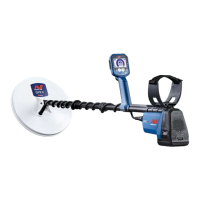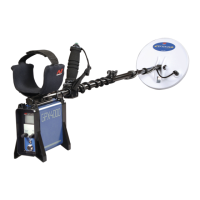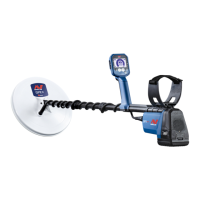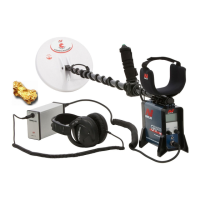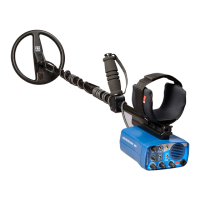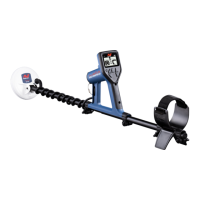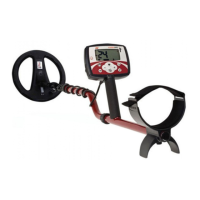80 81Detecting TipsRecovering the Target
Continued...
6 If the target signal disappears from the hole sweep the coil
over the loose dirt and pinpoint its exact position.
7 Take a handful of the dirt and pass it over the coil.
Note: Your hands and wrists must be free of any metallic
jewellery and watches when passing dirt over the coil.
8 If there is no signal, place the handful carefully in a new pile,
pinpoint the position of the target again, and repeat with
another handful of soil.
9 Once the target is in your hand, transfer half of the dirt to the
other hand. Test each handful of dirt across the coil.
10 If the target is too small to see drop the dirt onto the top of
the coil and with your finger move any suspect objects. A
target signal will only be given when the target is moved.
Note: The GPX Series are ‘motion’ detectors. This means the
coil must be moving over the target, or the target moving
over the coil, in order for the detector to ‘see’ it.
Back-fill Every Hole You Dig
Always refill any holes, and scatter leaves and surface
debris, before leaving the area. Help restore the area to
its original condition to help give electronic prospectors a
good reputation, and also disguise your secret hot-spot!
Any rubbish you recover should be taken away with you
and disposed of properly.
Refilling holes and removing rubbish will help detector
users maintain a good reputation. This should lead to
more areas being readily accessible for prospecting.
Follow these hints and techniques to help you to utilise the
power of your GPX Series detector, to ensure that every trip
is a success.
Identifying Target Signals
– Metallic targets will usually give a ‘solid’ sounding signal
when the coil is swept across the object from any direction.
A metallic target generally produces a short, sharp and
mostly symmetrical signal. Ground noises usually give a
broad uneven signal when the coil is swept from different
directions, and often may only give a signal from one
direction and no signal on the return sweep.
– If you are not sure if the sound is ground noise or a target
signal you should always investigate. Scrape a shallow hole
about 30mm (1”) deep over the suspected target. Sweep the
coil over the hole at the original ground level. Do not dip the
coil into the hole. If the signal has decreased in volume or is
less defined it is probably ground noise. If the signal remains
the same, or becomes louder, it is likely a metallic target. If
you are still not sure make the hole deeper and repeat
the process.
– A ‘halo effect’, which may be built up around a buried metal
object, makes the object appear to be larger to the detector
than it actually is. This will be reduced once the target is
disturbed from its position in the ground (e.g. a small object,
detected at a substantial depth, may be more difficult to
detect once disturbed from the ground and lying in the
loose dirt. If the object is re-buried the ‘halo effect’ will not
be present).
For Maximum
Gold Recovery
Keep the coil as close to the
ground as possible.
Listen carefully. This is more
important than looking.
Slow down, do not rush,
take your time.
Have a positive mind set
and imagine a nugget at
every next sweep!
Remember that covering
a small section of ground
thoroughly will be more
productive than randomly
searching a larger area.
The GPX Series detectors
are very sensitive and
recovering a small target
from loose, dry soil takes
skill and patience. A plastic
scoop allows you to pass
small amounts of soil
over the top of the coil to
check if your target is in it.
Carrying a plastic scoop is
a great way to speed up the
recovery process.
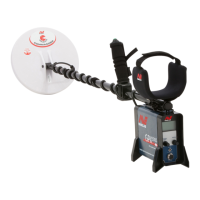
